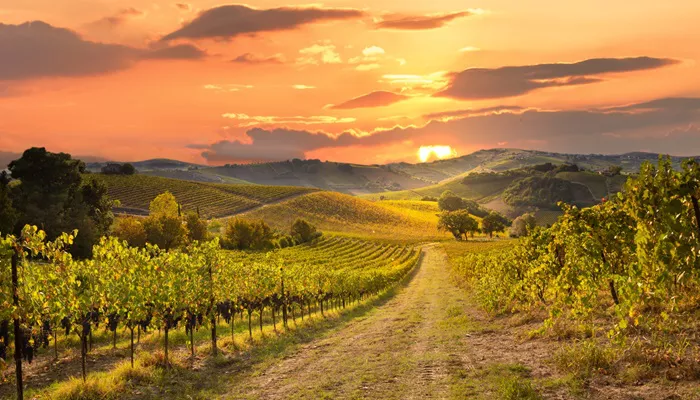The Classic Wine Library has long been a trusted reference for wine enthusiasts, students, and professionals. Originally established with contributions from legendary figures like John Livingstone-Learmonth, Anthony Hanson MW, and Rosemary George MW, the series earned a reputation for authoritative, region-specific wine literature. Revived in 2013 and now part of the Académie du Vin Library since 2023, the collection continues to expand, with its latest addition being The Wines of California by Elaine Chukan Brown, published in April 2025 (£35).
This latest volume brings both continuity and fresh perspective to the series. Brown, a respected wine writer and critic with deep personal and professional ties to California’s wine industry, approaches the subject with a distinctive voice — blending rigorous research with personal reflection. The result is a book that is as much a cultural and social commentary as it is a guide to California’s wines.
A Structure That Mirrors Time: Past, Present, Future
Brown’s work is structured into three major sections:
-
How We Got Here
-
Where We Grow
-
What We’re Facing
This tripartite structure offers a comprehensive overview of California’s wine industry, encompassing its historical roots, geographical diversity, and future challenges. The narrative arc is deliberately broad, aiming not only to chart the evolution of California wine but also to reflect on the socio-political dynamics that have shaped its identity.
The opening section, ‘How We Got Here’, delves into California’s vinous history — from the planting of the first vines to contemporary political events, including the impact of Donald Trump’s presidency. Notably, Brown places emphasis on the often-overlooked contributions of indigenous peoples and immigrant communities, providing a more inclusive retelling of California wine’s complex heritage.
The Future in Focus: Climate, Society, and Economy
The final section, ‘What We’re Facing’, shifts attention to the formidable challenges confronting California’s wine industry today. Climate change, social justice, economic pressures, and shifting consumer trends are all examined with nuance and insight. Brown’s treatment of these issues is intelligent and thought-provoking, offering an industry-insider’s perspective that is both candid and reflective.
However, while these broader discussions are undoubtedly relevant, they sometimes stray from the core focus of California wine itself. At times, the narrative appears to grapple with its own scope — oscillating between a targeted regional wine guide and a wide-ranging socio-political commentary.
The Core of the Book: A Regional Guide
The heart of the book — approximately 200 pages of its total 480 — is dedicated to profiling California’s diverse wine regions. Here, Brown covers the growing environments, wine styles, and key producers that define each area. This section fulfills the expectations of readers seeking a practical, informative guide to California wine, with accessible descriptions and valuable insights into terroir and viticulture.
Nevertheless, there are gaps. While the book provides an overview of major grape varieties, including a useful box-out highlighting the most planted grapes, it lacks deeper dives into varietals that are historically and culturally significant, such as Valdiguié, Petite Sirah, and Zinfandel. These grapes are mentioned in broader historical contexts but receive limited individual analysis, leaving readers wanting more detailed varietal profiles.
A Beautiful, Yet Conflicted Work
Elaine Chukan Brown’s prose is elegant and measured, balancing clarity with lyrical expression. Their expertise and deep connection to the subject matter are evident throughout. However, the book seems caught between two ambitions: serving as a functional, region-specific wine guide aligned with the Classic Wine Library’s legacy, and offering a broader, critical appraisal of California’s wine industry within a larger cultural and environmental framework.
While there is undoubtedly a place for both approaches, the result here feels somewhat conflicted. Readers seeking a straightforward regional guide might find the broader socio-political discourse to be a detour, while those interested in a sweeping industry analysis may find the regional guides too conventional.
A Valuable, If Slightly Misaligned, Contribution
In conclusion, The Wines of California is a thoughtful and beautifully written addition to contemporary wine literature. Its strength lies in Brown’s ability to weave personal narrative with scholarly research, offering a fresh lens through which to view California wine. However, its dual purpose — as a practical guide and an expansive industry critique — may leave some readers feeling that it sits uneasily between two genres.
For industry professionals, scholars, and those interested in the intersection of wine, culture, and environmental issues, Brown’s work is an enriching read. For casual wine lovers seeking a traditional reference guide to California wines, however, it may not fully meet expectations.
Still, as part of the evolving Classic Wine Library series, The Wines of California represents a bold and thoughtful expansion of what wine books can be — not just guides to regions and grapes, but reflections of the larger world in which wine exists.

